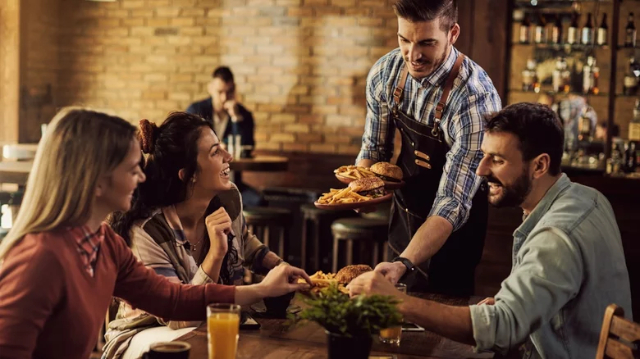Call it a lose-lose situation: inconsistent sick leave policies across the restaurant industry may be responsible for as much as 40 percent of restaurant-based food poisoning outbreaks. But workers can’t afford to stay home…
 Is your server sniffing? Are they sneezing? How are they handling the utensils?”
Is your server sniffing? Are they sneezing? How are they handling the utensils?”
Lose-lose
If restaurants offer their employees paid sick days off, they can reduce or even eradicate food poisoning outbreaks tied to their establishments. But that costs them money they can ill-afford to spend, especially in these hard economic times. On the other hand, employees without paid sick leave too often force themselves to come to work when they’re feeling sub-par because they can ill afford to stay home and lose hours.
But it appears that, while a majority of restos require their employees to report illness, or specific symptoms that may indicate illness, only a minority offer paid sick days.
Numbers are alarming
According to a new report by the U.S. Centers for Disease Control and Prevention (CDC), food workers who showed up while sick or contagious were linked to about 40 percent of restaurant food poisoning outbreaks with a known cause between 2017 and 2019. Norovirus and salmonella germs, which are fairly common but can cause severe illness, were the most common cause of 800 outbreaks studied. Those reports, which encompassed 875 restaurants, were recorded by 25 state and local health departments.
Positive approach to illness management needed
According to the CDC and STOP Foodborne Illness, a non-profit group, closer cooperation between management and employees, and a more comprehensive approach to food safety practices and procedures is needed across the industry.
The CDC study revealed: About 85 percent of restaurants said they had policies restricting staff from working while sick. But only 16 percent of the policies were detailed enough to require workers to notify managers and to stay home if they had any of the five key food poisoning symptoms — including vomiting, diarrhea, and sore throat with fever. And only about 44 percent of managers told the CDC their restaurants provided paid sick leave to workers. That’s a serious problem, STOP Chief Executive Mitzi Baum warns.
No clear solution in sight
As the reader may have guessed, there’s no clear solution to the situation. Not one that’s ‘fair’ to both restaurant operators and employees. Most restaurant workers aren’t covered by health care benefits commonly offered to office and industrial workers. The issue always comes down to: “Where is the money going to come from?”
Positive food safety culture
Employees and employers can work together to promote proper food handling and sanitation routines to minimize the occurrence of foodborne illness. Many resto workers don’t realize how important it is to simply wash their hands frequently, in accordance with CDC and official health recommendations.
Meanwhile…
Consumers are left to their own devices… But Baum says there are some simple observations we can make which will help us protect ourselves from resto worker facilitated food poisoning: “Is your server sniffing? Are they sneezing? How are they handling the utensils?”
~ Maggie J.

